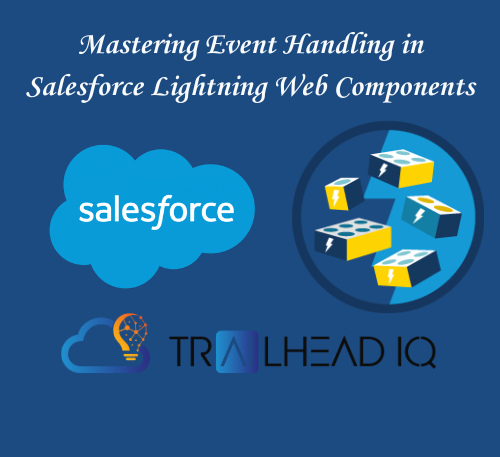Salesforce Lightning Web Components (LWC) offer a robust framework for building dynamic and responsive applications. A key aspect of this framework is the ability to communicate effectively between components using events. This blog post will guide you through the essentials of event handling in LWC, ensuring that your components can interact seamlessly.
Understanding Events in LWC
Events are the backbone of interaction within the LWC ecosystem. They allow components to send signals up the containment hierarchy, enabling a structured flow of information.
What Are Events?
Events in LWC are built upon the standard DOM Events model, which is a set of APIs and objects that are universally available across browsers. This model includes:
- Event Name (Type): A string that identifies the event.
- Event Configuration: The setup required to initialize the event.
- Event Emitter: The JavaScript object responsible for dispatching the event.
Creating and Dispatching Custom Events
To create a custom event in LWC, use the CustomEvent() constructor. Dispatching an event is done through the EventTarget.dispatchEvent() method. Here’s a quick rundown on naming conventions and best practices:
- Use lowercase letters.
- Avoid spaces; use underscores instead.
- Refrain from prefixing event names with “on” to prevent confusion in markup.
Event Handling Patterns
Handling events in LWC can be done declaratively or programmatically. Declarative handling is preferred for its simplicity and reduced code footprint.
Declarative Event Listening
Declare the event listener directly in the component’s HTML template. For example:
HTML
<!-- parent.html -->
<template>
<c-child onnotification={handleNotification}></c-child>
</template> [More info on FAQ](<https://www.bing.com/new#faq>).
Programmatic Event Listening
Alternatively, you can add an event listener in the JavaScript class using the addEventListener() method. Remember to remove any listeners added to global objects like window or document to prevent memory leaks.
Event Propagation and Retargeting
Event propagation allows an event to bubble up the DOM tree, while retargeting ensures that the event’s target is consistent with the scope of the listener, preserving the encapsulation of shadow DOM.
Listening for Input Changes
For elements that accept user input, such as text fields, use the onchange event to detect changes. This is crucial for implementing features like auto-correction or value restrictions as the user types.
Lifecycle Management of Event Listeners
LWC takes care of managing event listeners as part of the component lifecycle. However, if you manually add listeners to global objects, you must also manually remove them using the disconnectedCallback() lifecycle hook.
Best Practices and Tips
- Use the
Event.targetproperty to reference the component that dispatched the event. - Avoid using
addEventListener()withbind()as it can lead to memory leaks. - Ensure that your event handling logic maintains the integrity of the data throughout your template.
Conclusion
By mastering event handling in LWC, you can create interactive and user-friendly Salesforce applications that respond intuitively to user actions and changes in state. Remember to follow the best practices outlined in this guide to ensure a clean and efficient implementation.







